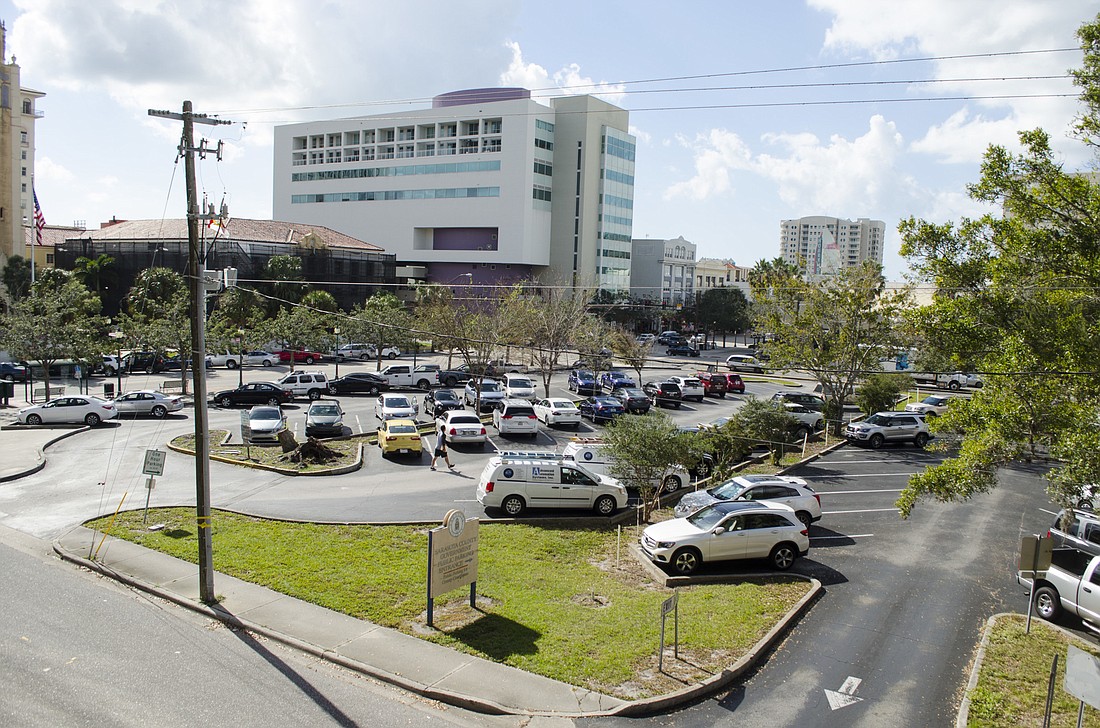- July 26, 2024
-
-
Loading

Loading

Aiming to replenish $5.4 million taken from the economic uncertainty fund to balance its 2018 budget, the County Commission wants to sell more than $5 million in public land.
County staff presented commissioners with three options for finding a one-time solution: selling surplus land; transferring money from the Economic Development Incentive Fund; or taking money from the fund designated for the Community Reinvestment Program.
In the end, commissioners decided to sell some land.
Commissioners voted to sell:
In total, if the sales go through at the expected amounts, the county will have $5.26 million to return to the economic uncertainty fund. Assistant County Administrator Jonathan Lewis expects the sale on these parcels to go through fairly quickly, although there’s no deadline.
“The goal was to put back into that reserve. The sooner we do it, the better,” he said, emphasizing the real concern is replenishing the fund before it affects the county’s bond ratings. However, he told commissioners he was confident that having a plan in place to replace the money would satisfy the bond companies’ requirements.
A resident group, Fresh Start, urged commissioners to hold off on selling other parcels around Palmer Road and Apex Boulevard.
Commissioners agreed not to sell the parcels south of Palmer Road right away, though they are still on the surplus list.
“You will be able to determine much more effectively which lands are of value to the community and which should be discarded,” said Kafi Benz, of Fresh Start.
Hearing that, the commission agreed to remove the southeast parcel from the list, and to allow the group to come back with its recommendations for it and a parcel to the southwest of the intersection within six months.
Commissioners were hesitant to transfer money to solve the financial puzzle.
“I’d just as soon stop right here,” Commissioner Al Maio said, and the motion to suspend searching for funds to cover the remaining balance passed, 3-2.
Even with the sale of the surplus land and the economic uncertainty fund poised to be rebuilt, there’s still work to be done in the coming months.
“It still doesn’t solve the long-term problem,” said Chief Financial Management Officer Steve Botelho.
Starting in January, the County Commission must identify departmental cuts to offset the impending budget shortfalls.
In the summer, county staff proposed a tax on public services that would have raised $5.4 million in its first year, and $11.8 million in following years. By balancing the 2018 budget with $5.4 million from the economic uncertainty fund, the commission solved the problem only for this year. In the next fiscal year, it will have to solve a more than $11 million shortfall.
Commissioners and county staff plan to go through the budget line by line and choose things to cut “a la carte,” Botelho said. The following departments will have to make an 11.6% cut to their budgets: Parks, Recreation and Natural Resources, Support Services, SCAT, General Services, Libraries and Historical Resources, Health and Human Services, Planning and Development Services, Public Works, Lifeguards and Emergency Management, Capital Improvement, UF/IFAS Extension and Economic Development.
It’s an exercise the county went through before, around 2008, when $9 million was cut from the budget.
“Maybe they pick the height of grass but not how frequently we chalk the baseball fields — it’s going to get to that level of detail,” Botelho said.
The first meeting to discuss budget cuts is scheduled for Jan. 31.